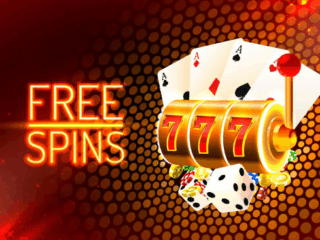
Most card games are all about probability. Casino games and old-time favorites both tend to use a little bit of math to help players along. So, let’s take a look at the numbers in two extremely popular card games.
Blackjack – The Archetypal Numbers Game
Blackjack is one of the most popular online casino games out there. There’s a good deal of luck involved, but you can improve your chances by playing with the correct strategy. Let’s take a look at the basics and then move onto some more interesting strategic points – with a focus on the numbers, of course!
The Basic Strategy Behind Blackjack
To win at blackjack, you need to beat the dealer by having a hand as close to 21 as possible. Your cards’ values are all equal to the number shown on the card, excluding picture cards. These are equal to 10. Aces can be worth either 1 or 11 points, depending on which is the most beneficial at the time.
To begin, all players are dealt two cards, including the dealer. He has one of his cards face up. The players can then choose to either take another card (hit) or keep their current hand (stand). If they’re super confident, then they can double down. Alternatively, they can split a hand into two separate ones (often a solid choice with aces).
Probability is King
A basic strategy would encourage you to hit on lower numbers and stand on anything above 17 or so. However, a fundamental is also to pay attention to the dealer’s visible card. If it’s a 10, there’s a better chance he has a strong hand. In this situation, it might be worth continuing to hit to reach as close to 21 as possible – without busting. This type of working out is essentially probability – but it needn’t be guessing work.
Back in the 1960s, a glorious group of mathematicians worked out the optimum strategy for playing blackjack. They published their findings as a chart that shows exactly what to do depending on your own hand and the dealer’s visible card. Brilliant. If you’re a beginner or even an advanced player who’s not a mathematician, then sticking to this script is the best way to get better results.
Hearts – A Classic with a Numerical Edge
Hearts is a favorite that many of us will have played back in the days of Windows 95, and not a lot has changed since.

The rules remain exactly the same for this classic card game, though the graphics on the online versions have improved significantly. As for the math, this is a deceptively mathematical game, involving strong strategy and a solid understanding of probability.
The Basic Strategy Behind Hearts
Before we start, it’s essential to understand the basics. You need to avoid taking any hearts or the Queen of Spades, as all of these cards carry a penalty: Hearts one point and the Queen of Spades a hefty 13 points. If you manage to take all of these cards (shoot the moon) then you score zero penalty points and everybody else scores 26 – though this is understandably, a very risky strategy.
Usually, you need to try to pass these cards (hearts and the Queen of Spades) to the other players, with the order of passing changing each round. The difficulty lies in passing these cards when you must also follow the suit that’s currently being played. If you play the highest card of the current suit, then you win the trick. Then, you get to decide which suit is played next. Oh, and whoever has the lowest penalty score at the end of all of the rounds? They win.
Understanding Probability and Combinatorial Mathematics
The title is – admittedly – a mouthful, but it’s easier to understand than you’d think! Probability is simply understanding how likely it is that something will happen. Combinatorial mathematics looks at a finite number of objects (in this case cards). Then it works out all of the different ways (combinations) that you can arrange them. In a card game, combinatorics is essential, it’s just a word that doesn’t come up all that much!
You need to consider that there is a huge range of the cards and order that players will have dealt them. There are 52/13 (52 over 13) ways to hand 13 cards to one player, which is how many you’re dealt in a hand of cards. This is known as a binomial fraction, and it extrapolates to 635,013,559,600. That’s a lot of different orders and selections of cards. Now imagine this for all four players. The possibilities are almost endless.
Guessing what your opponents are holding is hard, but looking out for cards that they’re regularly passing, suits that they’re choosing and especially if they’re never passing Hearts can be a good starting point. Keeping track of high cards that have been played helps you to guess where they are and see if they’re coming up often. Essentially, this is card counting, which isn’t illegal anywhere, especially not in a game of Hearts, but is definitely looked down upon in casinos!



